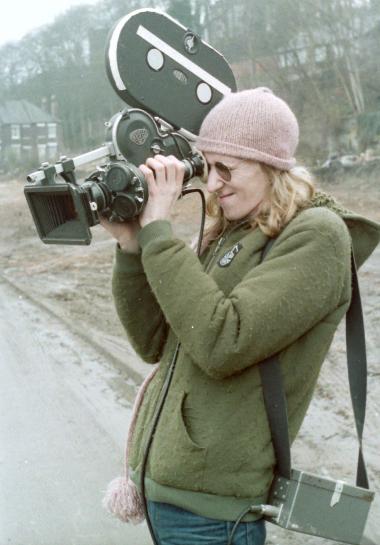› Forums › Music › Audio Visual › Old skool documentary film making (from the 1970s/1980s)
- This topic has 0 replies, 1 voice, and was last updated October 1, 2012 at 4:29 pm by General Lighting.
-
AuthorPosts
-
October 1, 2012 at 4:29 pm #1054065
Al Stokes is a filmmaker, journalist and musician currently based in Norwich. He recently joined Tribal Living.
He is retiring soon from the industry but has set up a blog and website. So with his permission, as these are from his personal website and picture gallery) here are some pictures of the equipment used “back in the day”.
[IMG]http://alstokesofficialwebsite.yolasite.com/resources/1982%20Al%20Bob%20Crew%20a.JPG.opt389x629o0,0s389x629.JPG[/IMG]
[IMG]http://alstokesofficialwebsite.yolasite.com/resources/Crew%201.JPG.opt421x280o0,0s421x280.JPG[/IMG]

The camera is an Arriflex 16BL. It used 16mm film which was loaded into the big magazine on the top (in pitch darkness!) There was only about 15 minutes on each magazine of film, and it had to be processed in the old way, so no instant gratification. A news crew could turn round reversal film (same colours) quite quickly but the picture quality wasn’t as good (if you are old enough to remember when news was shot on film rather than video, you might also remember how rough and grainy it looked).
In European or EBU countries, there are 24 frames in a second of film for cinéma, and 25 frames for film used in a television studio (to match the rest of the video equipment). (This is still the correct standard to use in the UK, although too many cheap digicams shoot at 29.997fps or 30fps
 )
)the box connected to the camera is I believe for the power supply (a separate battery) and a sync connection which goes to a tape recorder the sound engineer carries along with the microphone on a boom pole.
Sound was recorded on a separate spool of tape using a portable reel to reel tape machine, often a Nagra (expensive!) or a UHER 4000 report (not as pricey although not as reliable and more common for radio use). The ones used for sound film making recorded an extra track with a signal used to keep all the equipment in synchronisation. These machines looked more like they came from a spy movie themselves.
Normally the clapper board (slate) is used as well, the noise of this can be matched up with the frame of the film where the sticks hit the top of the slate, to keep the sound and picture in sync.
Ironically in these digital multi channel days (and because many cheap camcorders do not have the best audio stages), the clapperboard has made a resurgence as it still works with digital editing on computers…
Pics are all (C) Copyright Al Stokes and came from his website here
http://alstokesofficialwebsite.yolasite.com/picture-gallery.phpI will try and exchange emails so we can share some more pics of the sound and editing..
-
AuthorPosts
- You must be logged in to reply to this topic.
› Forums › Music › Audio Visual › Old skool documentary film making (from the 1970s/1980s)
